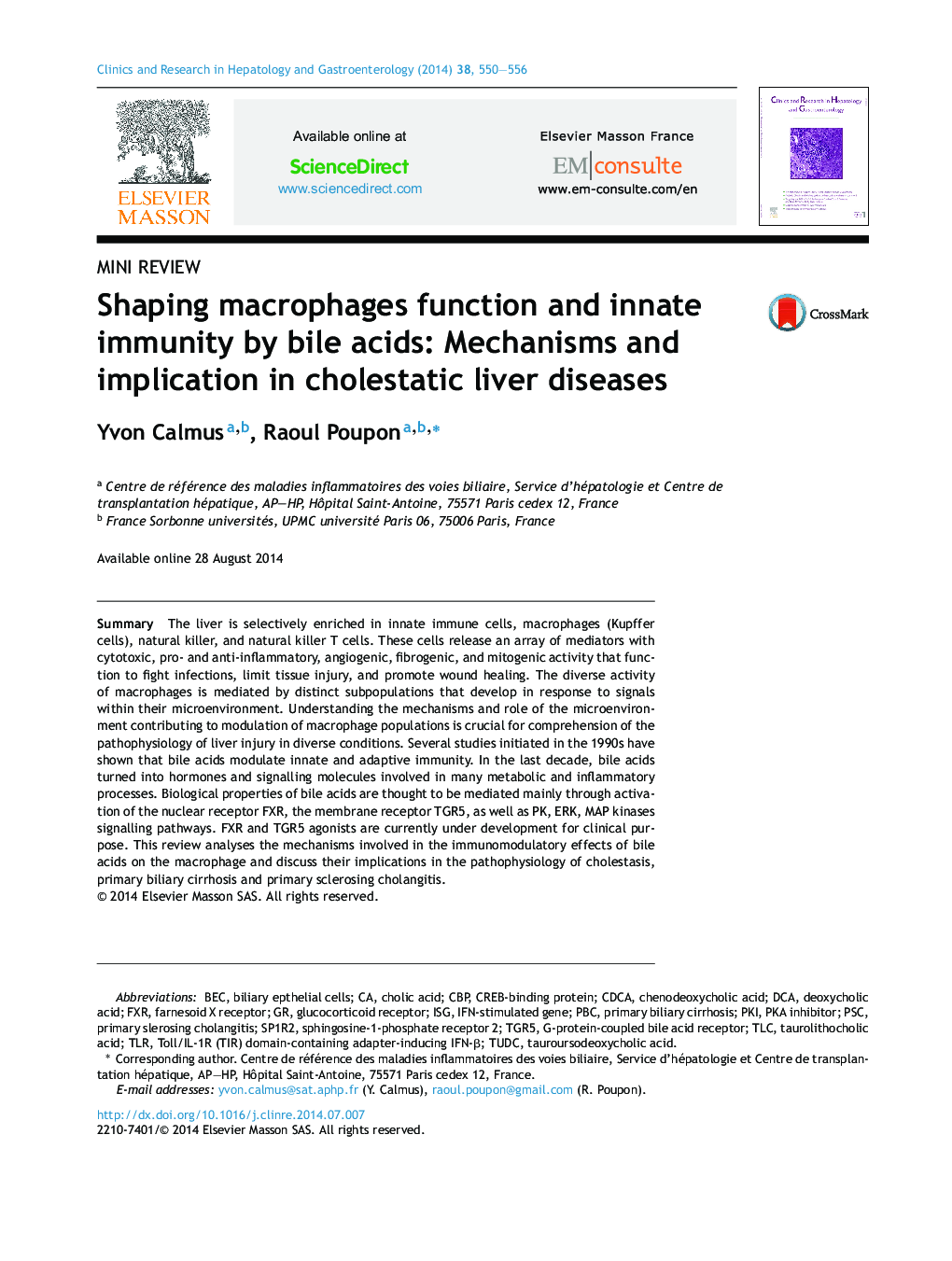| کد مقاله | کد نشریه | سال انتشار | مقاله انگلیسی | نسخه تمام متن |
|---|---|---|---|---|
| 3286436 | 1209297 | 2014 | 7 صفحه PDF | دانلود رایگان |
SummaryThe liver is selectively enriched in innate immune cells, macrophages (Kupffer cells), natural killer, and natural killer T cells. These cells release an array of mediators with cytotoxic, pro- and anti-inflammatory, angiogenic, fibrogenic, and mitogenic activity that function to fight infections, limit tissue injury, and promote wound healing. The diverse activity of macrophages is mediated by distinct subpopulations that develop in response to signals within their microenvironment. Understanding the mechanisms and role of the microenvironment contributing to modulation of macrophage populations is crucial for comprehension of the pathophysiology of liver injury in diverse conditions. Several studies initiated in the 1990s have shown that bile acids modulate innate and adaptive immunity. In the last decade, bile acids turned into hormones and signalling molecules involved in many metabolic and inflammatory processes. Biological properties of bile acids are thought to be mediated mainly through activation of the nuclear receptor FXR, the membrane receptor TGR5, as well as PK, ERK, MAP kinases signalling pathways. FXR and TGR5 agonists are currently under development for clinical purpose. This review analyses the mechanisms involved in the immunomodulatory effects of bile acids on the macrophage and discuss their implications in the pathophysiology of cholestasis, primary biliary cirrhosis and primary sclerosing cholangitis.
Journal: Clinics and Research in Hepatology and Gastroenterology - Volume 38, Issue 5, October 2014, Pages 550–556
